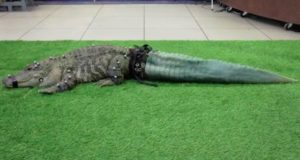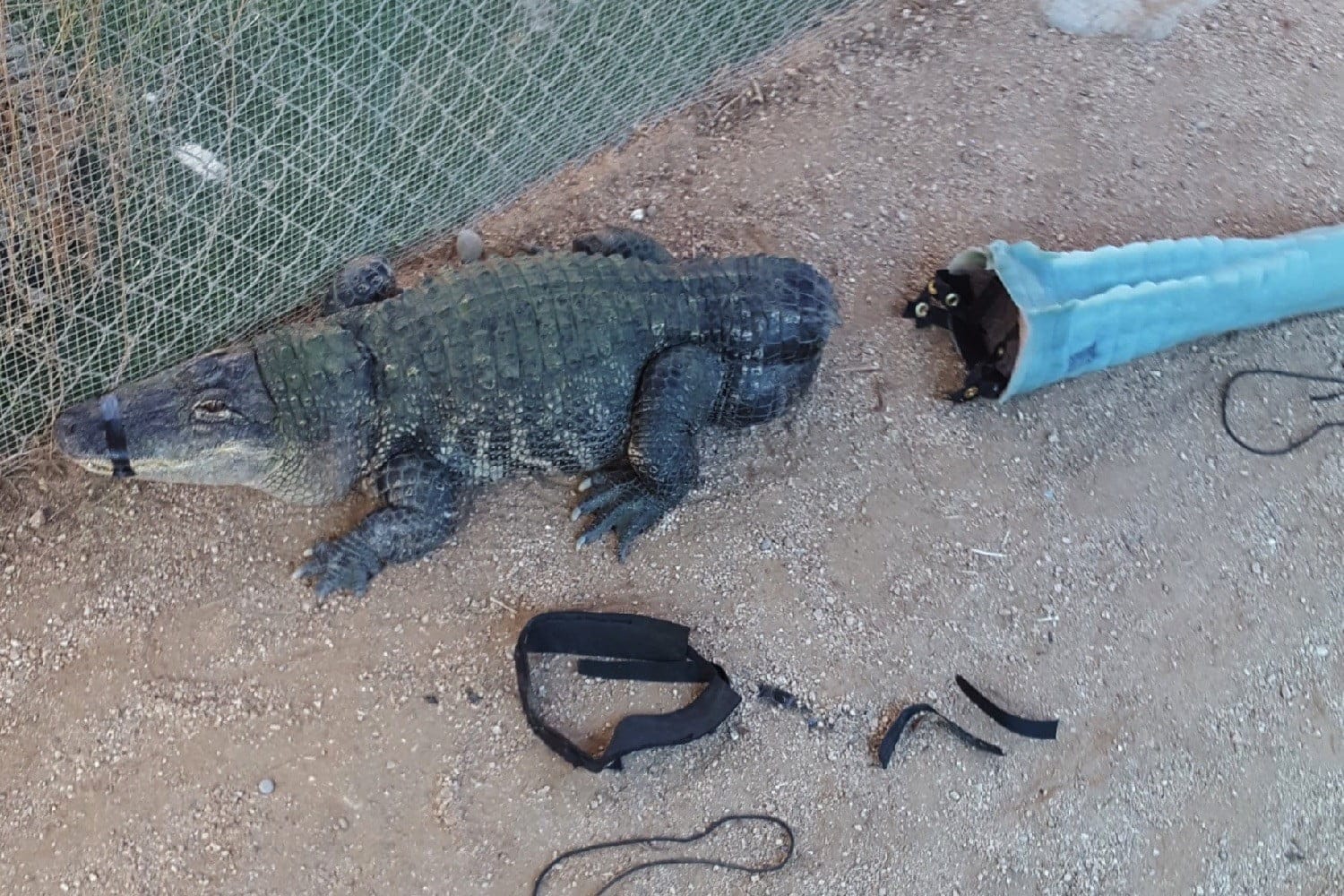
Mr. Stubbs The Tailless Alligator Gets A New Specialized 3D Printed Prosthetic Tail
Mr. Stubbs, an alligator that that did not have any tail got something that he really wanted.
For a number of years, Mr. Stubbs lived without having any tail. This happened after the reptile sustained an injury while it was being transported illegally by a group of animal traffickers.
Mr. Stubbs spent most of his time by living in land as he had difficulties to stay under water.
In 2013, Mr. Stubbs was transported to the Phoenix Herpetological Society, and since then, he received something that would make him complete again.
The team helped create a 3D printed Prosthetic Tail for Mr. Stubbs and they successfully attached it to his tail.
Mr. Stubbs was brought into the Phoenix Herpetological Society Facility when he was only 9-years-old, and he became the first ever Alligator in the world that had a prosthetic tail fitted on his back.

The prosthetic tail of Mr. Stubbs is made out of Silicone and Latex.
While Mr. Stubbs was growing up, so did his body size, this ended up in making a number of prosthetic tails for Mr. Stubbs.

To solve this new problem, a pair of researches created a specialized attachment for Mr. Stubbs, all thanks to the advanced 3D printing technology.
Justin Georgi, an associate professor of anatomy in Midwestern University in Arizona, and a student who had a master’s degree in Search of Project collaborated with STAX3D, a 3D printing company, so they could create a new specialized tail for Mr. Stubbs.
The two used an Artec 3D scanner, so they could calculate the exact dimensions of Mr. Stubb so they could create a perfect attachment that was right for his weight, buoyancy, and his increasing body size.
Justin said, “They got the resolution where features even below the millimeter scale were visible and usable. Watching it happen there in real-time was incredible. With 3D technology, you can really custom fit or anticipate growth.”
When Justin found out that Mr. Stubbs used his tail to “tail slap” a worker in the facility.
Justin said, “My initial reaction was, ‘That’s wonderful!”
He continued, “Of course I had to stop and ask if the volunteer was okay, too. But hearing that he was using that tail in a natural fashion was just a terrific and exciting landmark.”